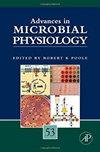农学进展
2区 生物学
Q1 Biochemistry, Genetics and Molecular Biology
引用次数: 4
摘要
放牧模式可以评估放牧管理策略所带来的生态系统服务的供给和权衡。我们回顾了12个用于评估当前和预测气候条件下牧草和动物(肉和奶)产量、土壤碳固存、温室气体排放和氮淋溶的放牧模型。考虑到动物、植物和土壤相互作用的大多数牧场和牧场的时空变异性特征,目前没有一个模型能够模拟不同空间尺度和跨多个地点的牧场提供的全套生态系统服务。大量的模型应用集中在放牧管理的环境影响和生态系统的可持续性等主题上。需要更多的模型组件来解决动物觅食行为的时空动态、与放牧地生物物理和生态过程的相互作用及其对动物生产性能的影响。除了在模拟放牧生态系统生物物理过程中发现的知识差距之外,我们的综述还建议进一步改进这些模型,以增加这些模型作为决策支持工具的采用。牧场模型需要通过利用可用的大数据来减少模型参数化,从而增加用户友好性,从而可以使用多个模型来减少模拟的不确定性。需要通过仔细研究每个模型中潜在的生物物理和生态过程及其相互作用,减少放牧模式在模拟生态系统服务和放牧管理效果方面的不一致性。建模者、实验者和利益相关者之间的学习经验需要通过共同开发建模目标、方法和模拟结果的解释来加强。本文章由计算机程序翻译,如有差异,请以英文原文为准。
Advances in Agronomy
Grazing land models can assess the provisioning and trade-offs among ecosystem services attributable to grazing management strategies. We reviewed 12 grazing land models used for evaluating forage and animal (meat and milk) production, soil C sequestration, greenhouse gas emission, and nitrogen leaching, under both current and projected climate conditions. Given the spatial and temporal variability that characterizes most rangelands and pastures in which animal, plant, and soil interact, none of the models currently have the capability to simulate a full suite of ecosystem services provided by grazing lands at different spatial scales and across multiple locations. A large number of model applications have focused on topics such as environmental impacts of grazing land management and sustainability of ecosystems. Additional model components are needed to address the spatial and temporal dynamics of animal foraging behavior and interactions with biophysical and ecological processes on grazing lands and their impacts on animal performance. In addition to identified knowledge gaps in simulating biophysical processes in grazing land ecosystems, our review suggests further improvements that could increase adoption of these models as decision support tools. Grazing land models need to increase user-friendliness by utilizing available big data to minimize model parameterization so that multiple models can be used to reduce simulation uncertainty. Efforts need to reduce inconsistencies among grazing land models in simulated ecosystem services and grazing management effects by carefully examining the underlying biophysical and ecological processes and their interactions in eachmodel. Learning experiences amongmodelers, experimentalists, and stakeholders need to be strengthened by co-developing modeling objectives, approaches, and interpretation of simulation results.
求助全文
通过发布文献求助,成功后即可免费获取论文全文。
去求助
来源期刊

Advances in Microbial Physiology
生物-生化与分子生物学
CiteScore
6.20
自引率
0.00%
发文量
16
期刊介绍:
Advances in Microbial Physiology publishes topical and important reviews, interpreting physiology to include all material that contributes to our understanding of how microorganisms and their component parts work. First published in 1967, the editors have always striven to interpret microbial physiology in the broadest context and have never restricted the contents to traditional views of whole cell physiology.
 求助内容:
求助内容: 应助结果提醒方式:
应助结果提醒方式:


